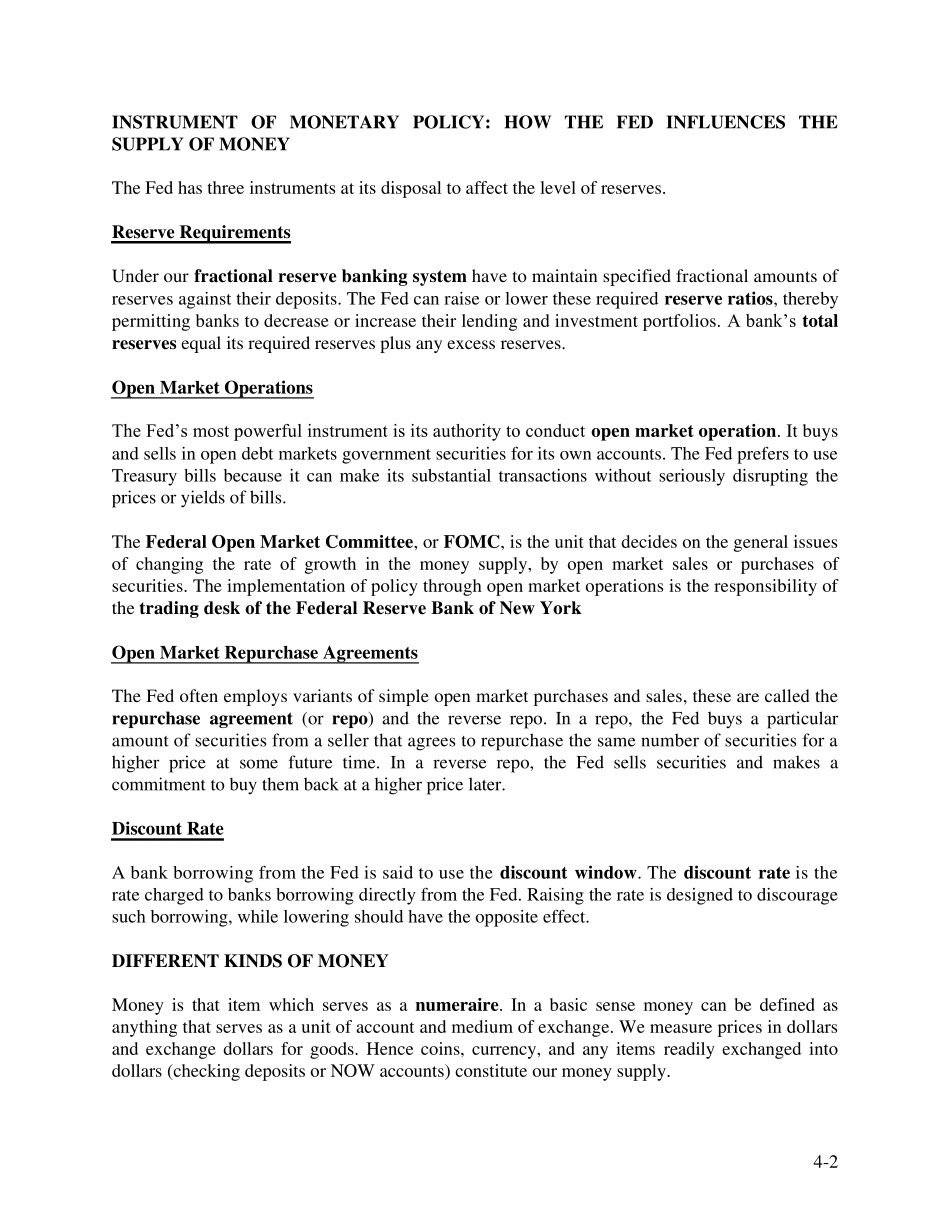4-1 CHAPTER 4 THE U.S. FEDERAL RESERVE AND THE CREATION OF MONEY CENTRAL BANKS AND THEIR PURPOSE The primary role of a central bank is to maintain the stability of the currency and money supply for a country or a group of countries. The role of central banks can be categorized as: (1) risk assessment, (2) risk reduction, (3) oversight of payment systems, (4) crisis management. One of the major ways a central bank accomplishes its goals is through monetary policy. For this reason, central banks are sometimes called monetary authority. In implementing monetary policy, central banks, acting as a reserve bank, require private banks to maintain and deposit the required reserves with the central bank. In times of financial crisis, central banks perform the role of lender of last resort for the banking system. Countries throughout the world may have central banks. Additionally, the European Central Bank is responsible for implementing monetary policy for the member countries of the European Union. There is widespread agreement that central banks should be independent of the government so that decisions of the central bank will not be influenced for short-term political purposes such as pursuing a monetary policy to expand the economy but at the expense of inflation. In implementing monetary and economic policies, the United States is a member of an informal network of nations. This group started in 1976 as the Group of 6, or G6: US, France, Germany, UK, Italy, and Japan. Thereafter, Canada joined to for the G7. In 1998, Russia joined to form the G8. THE CENTRAL BANK OF THE UNITED STATES: THE FEDERAL RESERVE SYSTEM The Federal Reserve System consists of 12 banking districts covering the entire c...


